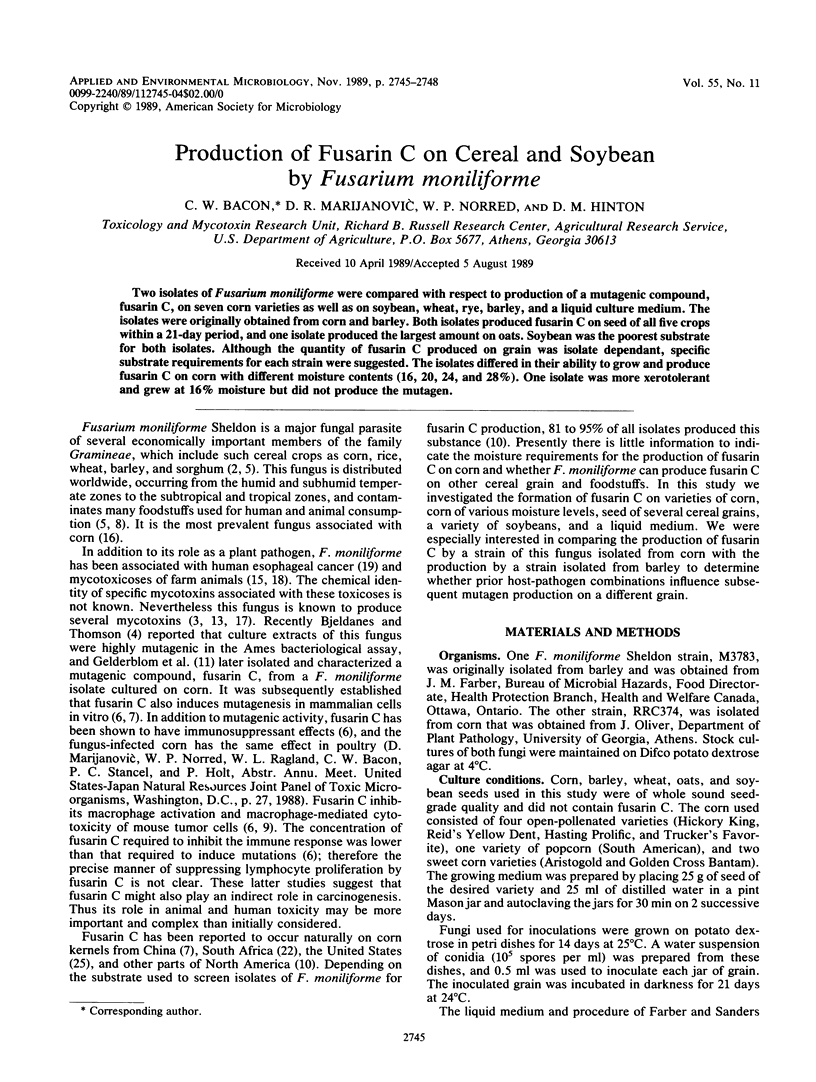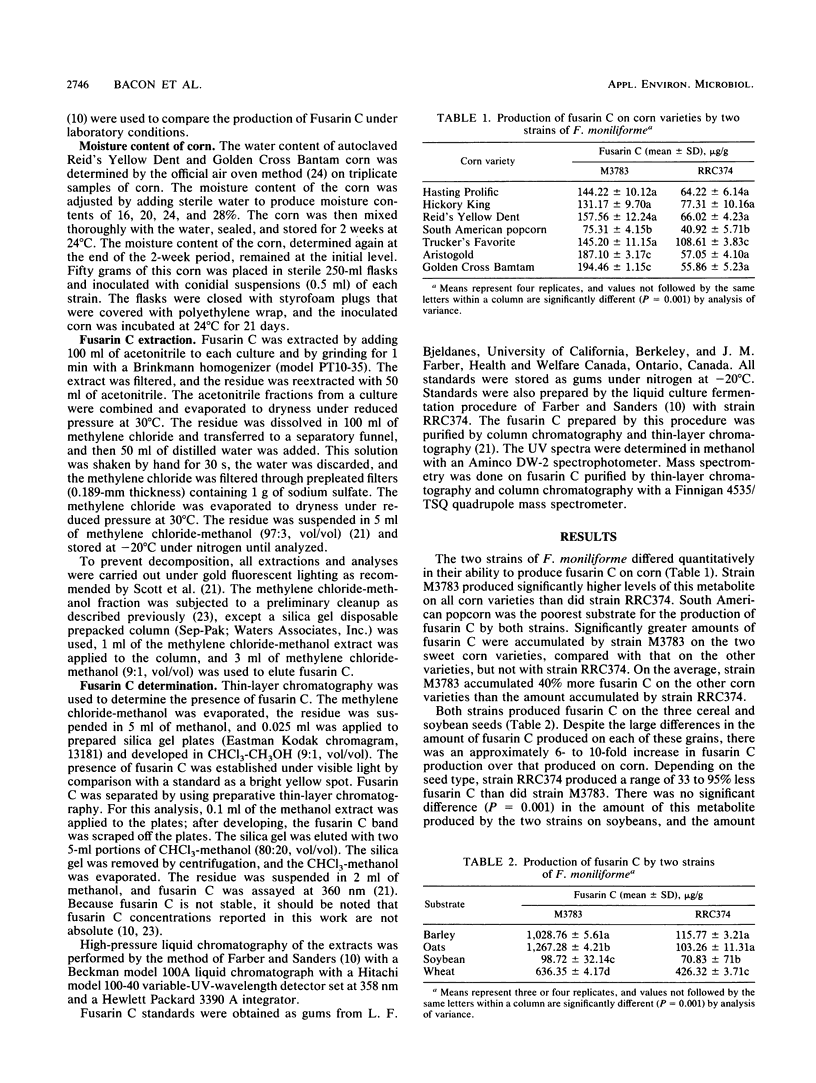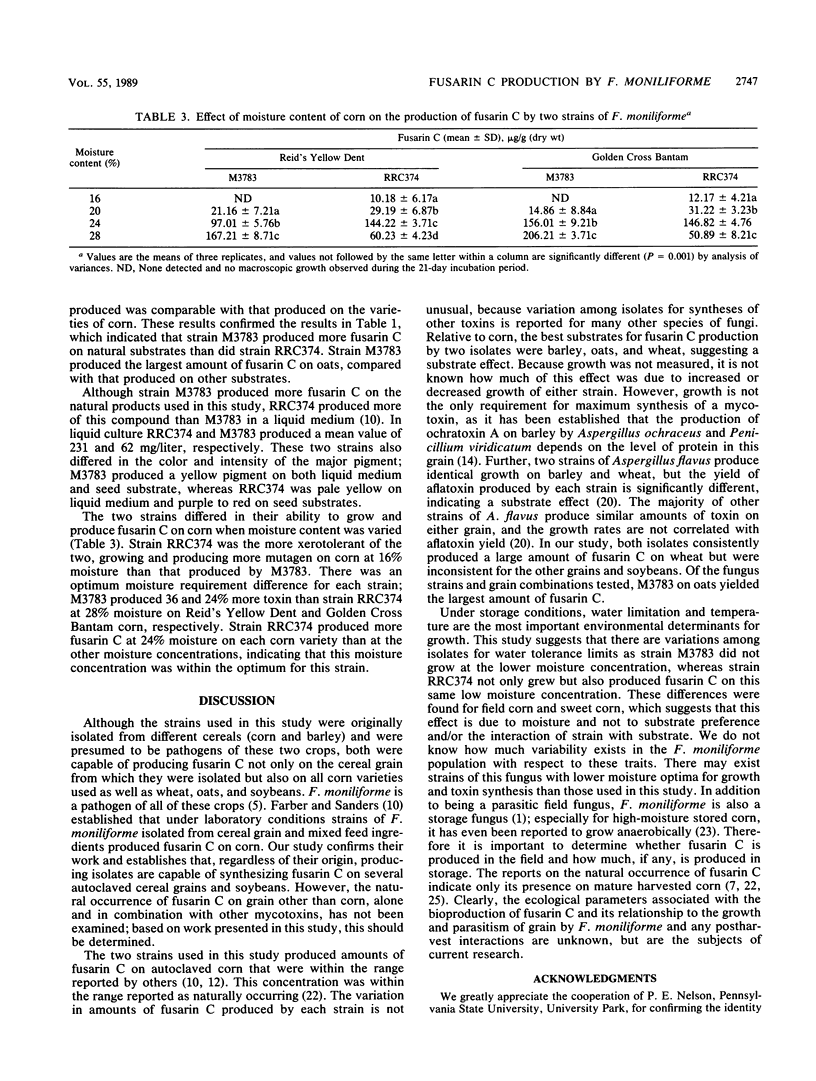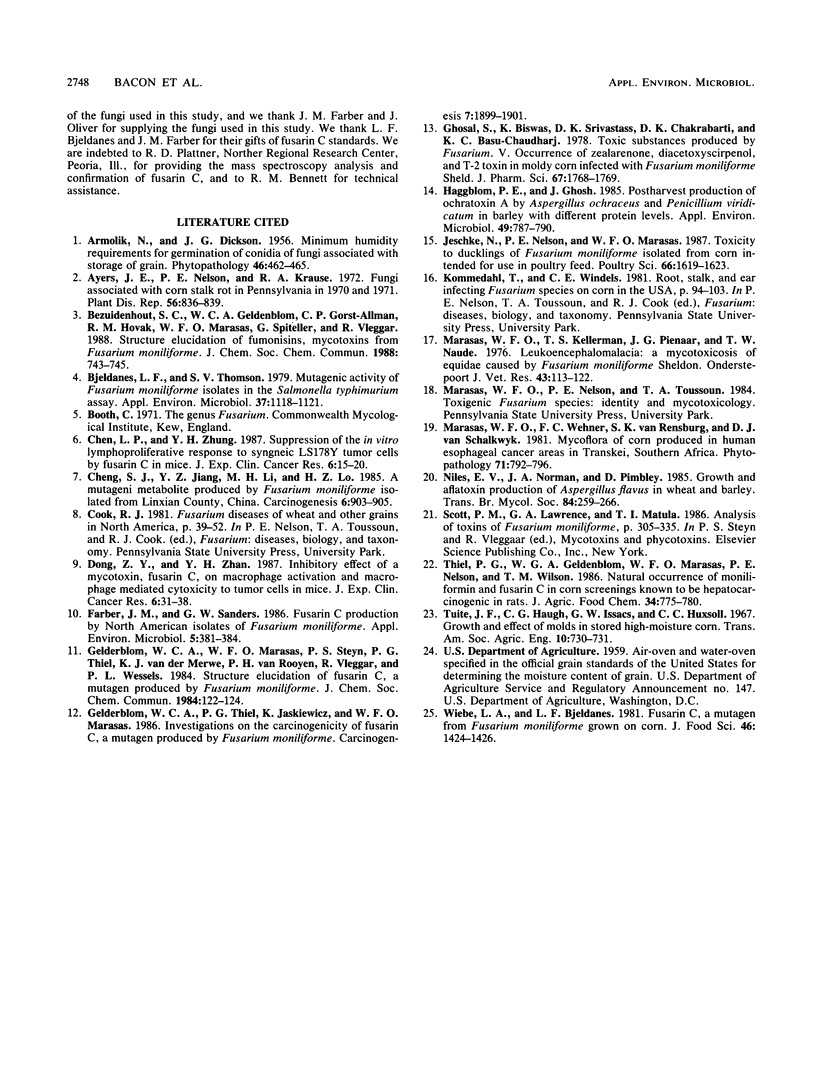Abstract
Two isolates of Fusarium moniliforme were compared with respect to production of a mutagenic compound, fusarin C, on seven corn varieties as well as on soybean, wheat, rye, barley, and a liquid culture medium. The isolates were originally obtained from corn and barley. Both isolates produced fusarin C on seed of all five crops within a 21-day period, and one isolate produced the largest amount on oats. Soybean was the poorest substrate for both isolates. Although the quantity of fusarin C produced on grain was isolate dependent, specific substrate requirements for each strain were suggested. The isolates differed in their ability to grow and produce fusarin C on corn with different moisture contents (16, 20, 24, and 28%). One isolate was more xerotolerant and grew at 16% moisture but did not produce the mutagen.
Full text
PDF



Selected References
These references are in PubMed. This may not be the complete list of references from this article.
- Bjeldanes L. F., Thomson S. V. Mutagenic activity of Fusarium moniliforme isolates in the Salmonella typhimurium assay. Appl Environ Microbiol. 1979 Jun;37(6):1118–1121. doi: 10.1128/aem.37.6.1118-1121.1979. [DOI] [PMC free article] [PubMed] [Google Scholar]
- Cheng S. J., Jiang Y. Z., Li M. H., Lo H. Z. A mutagenic metabolite produced by Fusarium moniliforme isolated from Linxian county, China. Carcinogenesis. 1985 Jun;6(6):903–905. doi: 10.1093/carcin/6.6.903. [DOI] [PubMed] [Google Scholar]
- Farber J. M., Sanders G. W. Fusarin C production by North American isolates of Fusarium moniliforme. Appl Environ Microbiol. 1986 Feb;51(2):381–384. doi: 10.1128/aem.51.2.381-384.1986. [DOI] [PMC free article] [PubMed] [Google Scholar]
- Gelderblom W. C., Thiel P. G., Jaskiewicz K., Marasas W. F. Investigations on the carcinogenicity of fusarin C--a mutagenic metabolite of Fusarium moniliforme. Carcinogenesis. 1986 Nov;7(11):1899–1901. doi: 10.1093/carcin/7.11.1899. [DOI] [PubMed] [Google Scholar]
- Ghosal S., Biswas K., Srivastava R. S., Chakrabarti D. K., Chaudhary K. C. Toxic substances produced by Fusarium V: occurrence of zearalenone, diacetoxyscirpenol, and T-2 toxin in moldy corn infected with Fusarium moniliforme Sheld. J Pharm Sci. 1978 Dec;67(12):1768–1769. doi: 10.1002/jps.2600671238. [DOI] [PubMed] [Google Scholar]
- Häggblom P. E., Ghosh J. Postharvest production of ochratoxin A by Aspergillus ochraceus and Penicillium viridicatum in barley with different protein levels. Appl Environ Microbiol. 1985 Apr;49(4):787–790. doi: 10.1128/aem.49.4.787-790.1985. [DOI] [PMC free article] [PubMed] [Google Scholar]
- Jeschke N., Nelson P. E., Marasas W. F. Toxicity to ducklings of Fusarium moniliforme isolated from corn intended for use in poultry feed. Poult Sci. 1987 Oct;66(10):1619–1623. doi: 10.3382/ps.0661619. [DOI] [PubMed] [Google Scholar]
- Marasas W. F., Kellerman T. S., Pienaar J. G., Naudé T. W. Leukoencephalomalacia: a mycotoxicosis of Equidae caused by Fusarium moniliforme Sheldon. Onderstepoort J Vet Res. 1976 Sep;43(3):113–122. [PubMed] [Google Scholar]


